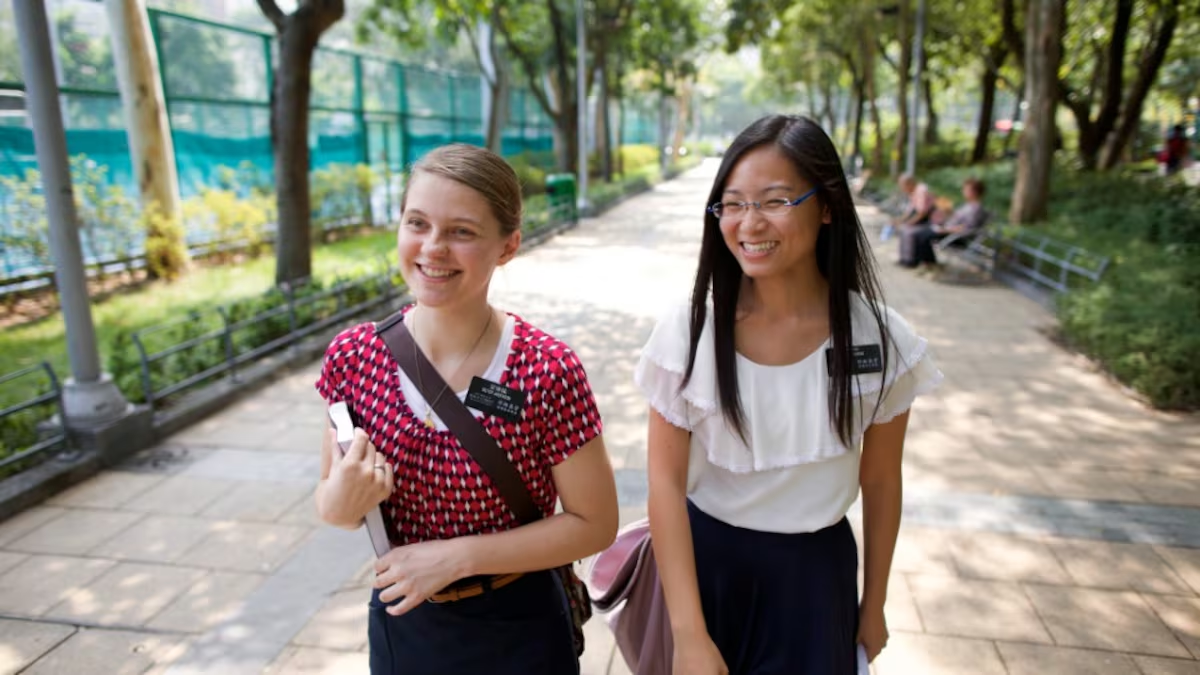In another major change under President Dallin Oaks, LDS women now can go on missions at 18

The move will have a profound impact on dating, marriage, educational and career patterns for tens of thousands of Latter-day Saints.
(The Church of Jesus Christ of Latter-day Saints) The addition of 55 new missions around the world comes amid a steady rise in missionaries and congregations in certain parts of the world.
Latter-day Saint missionaries are entering a new age of equality.
It’s 18.
The Church of Jesus Christ of Latter-day Saints announced Friday that it is lowering the minimum age for female missionaries from 19 to 18, making it the same as for men.
“The First Presidency is pleased to announce that, effective immediately, young women who choose to serve a full-time mission may begin their service at age 18 following graduation from high school or its equivalent,” the governing First Presidency said in a news release. “While the Lord asks every worthy, able young man as part of his priesthood responsibility to prepare for and serve a mission, we reiterate that missionary service remains an optional [emphasis in the release] opportunity for young women.”
The statement did not indicate a change in the length of missions for women. So they apparently will continue to serve for 18 months. Young men go for two years.
In October 2012, when the church dropped the age for male missionaries from 19 to 18 and for “sister” missionaries (as female proselytizers are called) from 21 to 19, the move had a dramatic impact on the Utah-based faith and culture.
Young women flocked to sign up, swelling the ranks of the missionary corps to a record high.
It changed marriage, educational and career patterns and plans as tens of thousands of young Latter-day Saints put dating, schooling and working on hold to do volunteer service for their faith — just as young men (known as “elders”) had done for decades.
It also had an impact on university sports recruiting, college admissions and family finances as well as missionary preparation and training.
This shift is certain to have similar impacts, possibly even on Utah’s birthrate, which, as it has across the nation and globe, has declined among Latter-day Saints in recent years and has been a concern of church leaders.
New church President Dallin Oaks addressed that in a 2023 worldwide devotional for young single Latter-day Saints.
Delaying childbearing, he said then, “means fewer children born to grow up with the blessings of the gospel.”
Marriage “is a gift,” added his wife, Kristen Oaks. “Not only does marriage give us the opportunity for children, it gives us the opportunity and incentive to begin a journey of growing with one another.”
With Friday’s news, the church’s army of full-time missionaries could skyrocket again as well.
Last month, in one of the first major moves of Oaks’ fledgling presidency, the church announced that 55 new missions would come on line next year. The tally of full-time missionaries, meanwhile, has topped 84,000.
Back in 2012, female missionaries still were a year behind men, who could leave as early as 18.
“There needs to be at least some separation,” apostle Jeffrey R. Holland said at the time to explain the missionary age difference between the genders.
Though the minimum ages now line up, that difference in length of missionary service for “elders” and “sisters” apparently remains.
When asked in 2012 why that should be, Holland said, “one miracle at a time.”
The sisters, it seems, will have to wait a little long for that second miracle.
Note to readers • This is a developing story.




